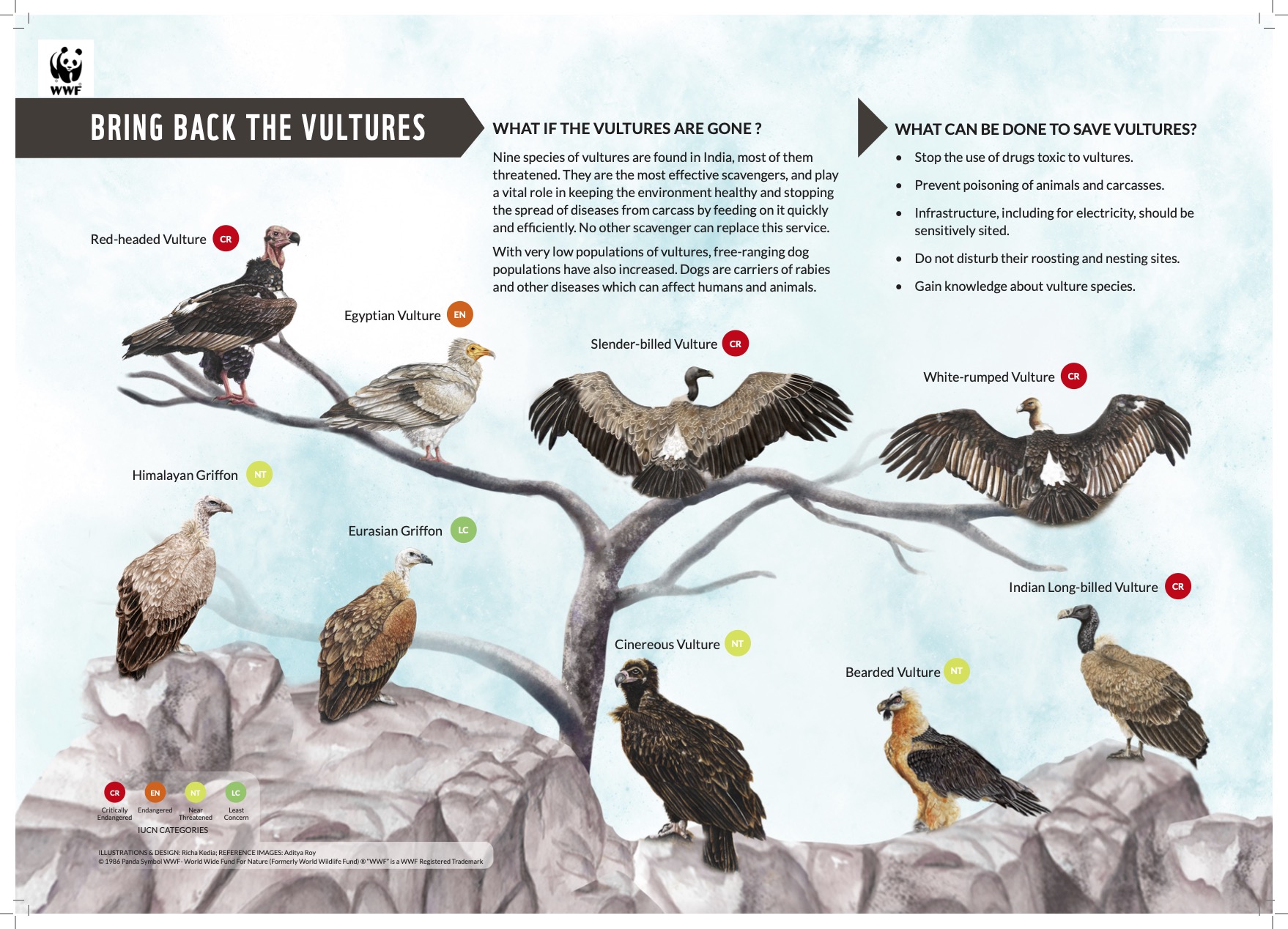Context:
Wildlife Institute of India (WII) has recently released the country’s first pan‑India survey of critically endangered vultures, titled “Pan‑India Assessment and Monitoring of Endangered Species – Vultures”. Survey focused on four critically endangered vulture species: Indian Vulture (Gyps indicus), White‑rumped Vulture (Gyps bengalensis), Slender‑billed Vulture (Gyps tenuirostris) and Red‑headed Vulture (Sarcogyps calvus).
Key findings of the survey:
· Out of 425 historical nesting sites documented across 25 states, only 120 showed active nesting, while 93 new nesting locations were identified, bringing the total to 213. Nearly half of these sites (103) are within protected areas.
· Madhya Pradesh and Rajasthan together account for about 63% of all vulture nests, with over 60% located within protected areas.
· The Slender-billed Vulture (Gyps tenuirostris) has lost all 47 previously known historical nesting sites and is now restricted to Upper Assam, with only 20 active nests recorded.
· Other species findings:
o White-rumped vulture (Gyps bengalensis): Active at 69 sites, down from 238 historical sites.
o Indian vulture (Gyps indicus): Found at 110 sites, retaining 86 historical and adding 24 new sites.
o Red-headed vulture (Sarcogyps calvus): Found at 5 new sites; none at historical sites.
Threats of vultures in India:
1. Habitat loss: Deforestation and degradation reduce nesting opportunities.
2. Toxic veterinary drugs: Despite the ban on diclofenac, population recovery remains slow.
3. Feral dogs: Interfere with access to carcasses and disrupt feeding behavior.
4. Fragmentation of populations: Slow natural recolonization of vacant sites.
About Vultures:
Definition: Large carrion-eating birds, primarily found in tropical and subtropical regions; India hosts 9 resident and migratory species.
Significance:
o Clean the environment by consuming carcasses.
o Control the spread of wildlife and livestock diseases.
Conservation Status: Protected under Schedule I, Wildlife Protection Act, 1972.
Government Initiatives for Vulture Conservation:
To counter vulture decline, India has implemented several conservation measures:
1. Vulture Conservation Breeding Centres (VCBCs): Established in states like Haryana, West Bengal, and Assam to breed and release critically endangered species.
2. Ban on toxic NSAIDs (diclofenac): Veterinary use of diclofenac has been banned, and safer alternatives like meloxicam are promoted.
3. Protected Area Management: Focus on nesting site protection, habitat restoration, and monitoring within sanctuaries and national parks.
4. Carcass Management Programs: Ensuring carcasses are free from harmful drugs and reducing human-wildlife conflict.
5. Awareness Campaigns: Promoting community participation in vulture conservation efforts.
Conclusion:
The WII assessment provides a crucial baseline for the current status of India’s vultures, highlighting the urgent need for integrated conservation strategies. Protecting nesting habitats, regulating carcass quality, controlling feral dog populations, and continuous monitoring are essential to prevent further decline and ensure the recovery of these ecologically vital species.







